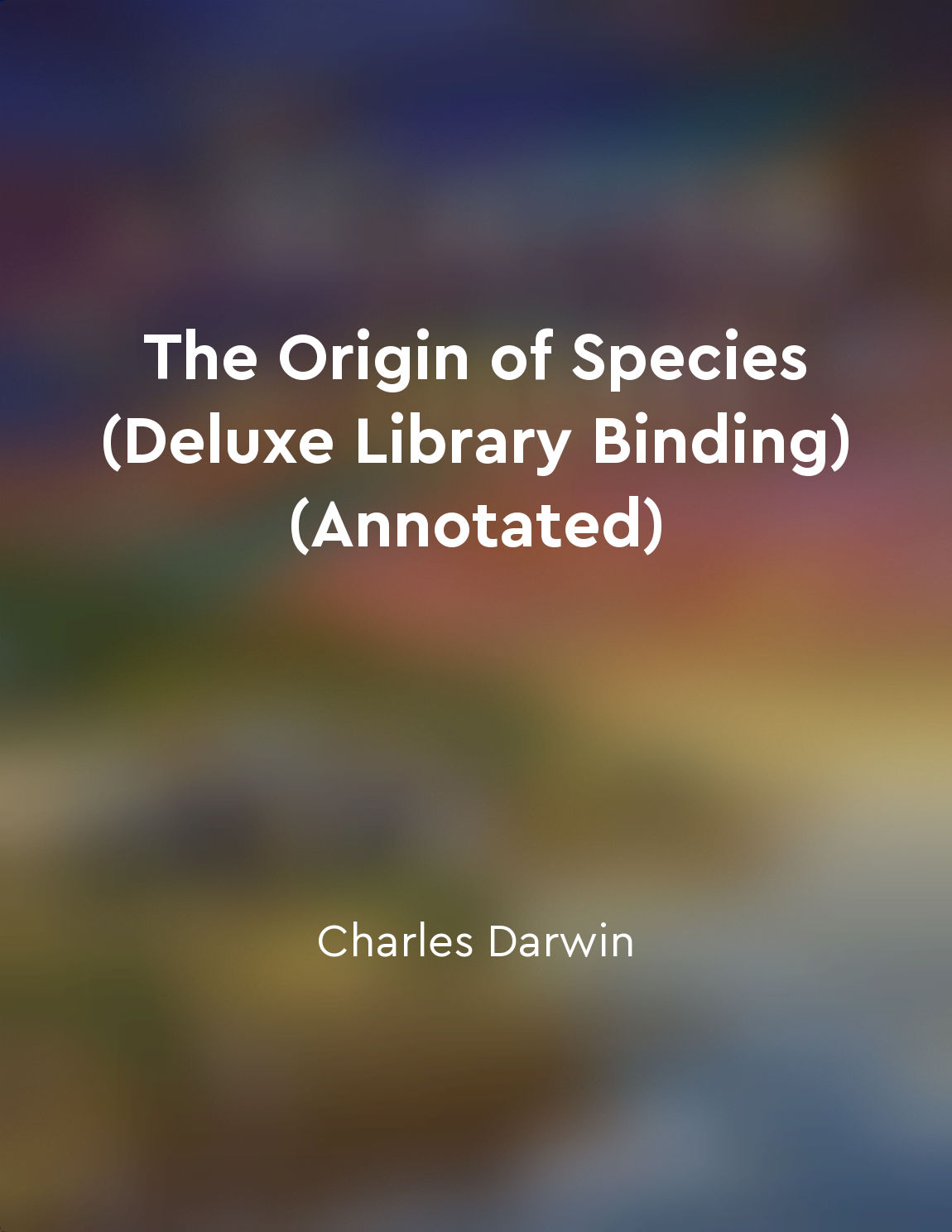Variations within a species contribute to survival from "summary" of The Origin of Species by Charles Darwin
The process of natural selection relies heavily on the variations that exist within a species. These variations, no matter how small, can have a significant impact on an individual's ability to survive and reproduce. For example, a slight change in the coloration of a bird's feathers may make it better camouflaged against predators, increasing its chances of survival. Similarly, a slightly longer beak on a finch may allow it to access food sources that others cannot, giving it a competitive advantage in the struggle for resources. Over time, these small variations can accumulate within a population, leading to the development of distinct traits or characteristics. This process, known as descent with modification, is central to the theory of evolution. By selecting for those individuals with traits that are best suited to their environment, natural selection drives the gradual change and adaptation of species over generations. It is important to note that not all variations within a species will necessarily contribute to survival. Some may be neutral, while others may even be detrimental. However, those variations that do provide a fitness advantage are more likely to be passed on to future generations, ultimately shaping the genetic makeup of the population. The concept of variations within a species contributing to survival is fundamental to our understanding of how life on Earth has evolved and diversified over millions of years. By studying the mechanism of natural selection, we can gain insights into the processes that drive the adaptation of organisms to their environments, as well as the patterns of diversity that we observe in the natural world.Similar Posts

The search for truth should be based on reason and evidence
In the pursuit of truth, it is essential to rely on reason and evidence. This principle serves as the foundation for discoverin...

Adapt or die
The world is constantly changing, and those who cannot adapt to these changes are doomed to fail. This harsh reality is evident...

Competition among species drives evolution
The struggle for existence among all organic beings throughout the world, which we see everywhere in our daily lives, is the dr...

Competition drives evolutionary change
The process of evolution is driven by the competition for limited resources among individuals within a population. This competi...
Constraints and biases impact evolutionary patterns
Evolutionary patterns are not solely determined by random variations and natural selection. Constraints and biases also play a ...
Embracing the truth of evolution enriches our understanding of the natural world
The truth of evolution is a profound concept that has the power to transform our understanding of the natural world. By accepti...
Evolutionary theory is a dynamic and expanding field
Evolutionary theory is a dynamic and expanding field. This statement captures the essence of a discipline that has always been ...
Microevolution is observable within a single lifetime
In Darwin's Dangerous Idea, Dennett explores the concept of microevolution, emphasizing the observable changes that can occur w...

Reproduction is essential for genetic transmission
Reproduction plays a crucial role in the transmission of genes from one generation to the next. Without the process of reproduc...

Competition among species drives evolution
The struggle for existence among all organic beings throughout the world, which we see everywhere in our daily lives, is the dr...
